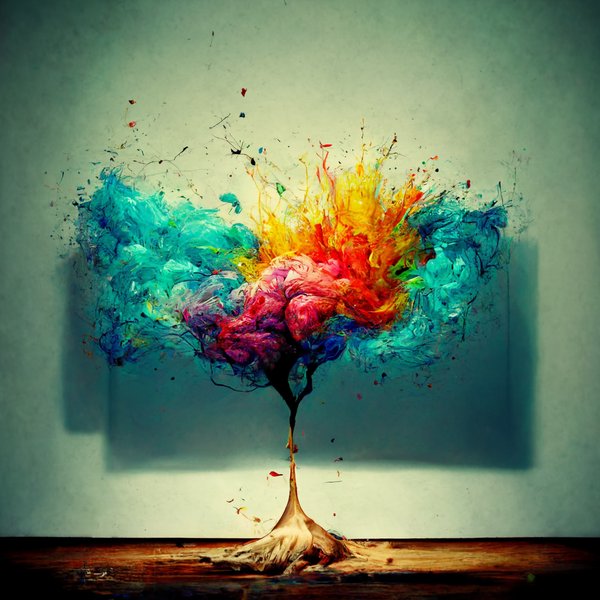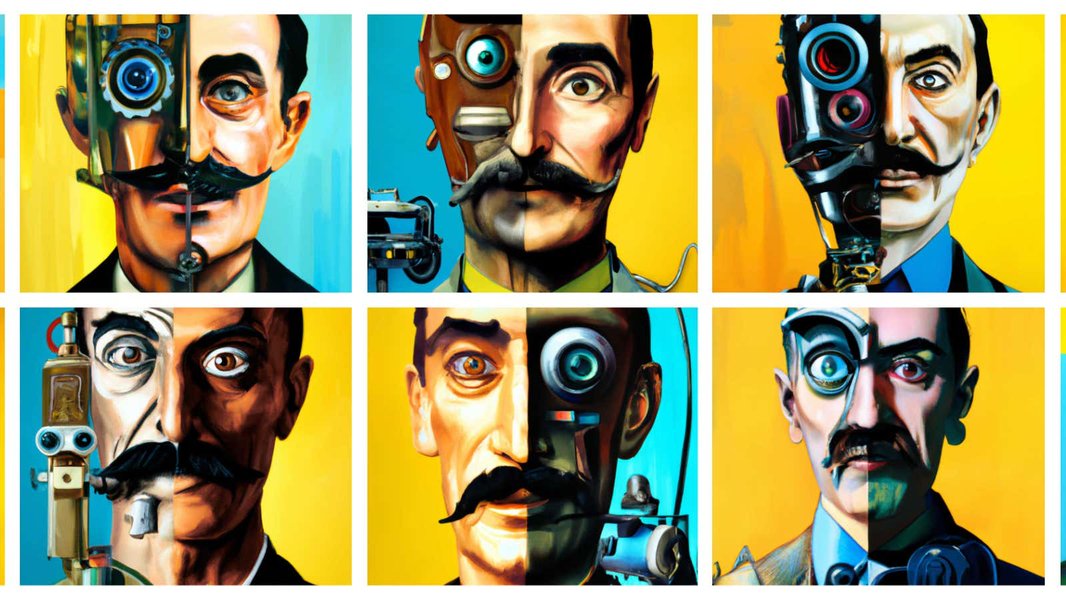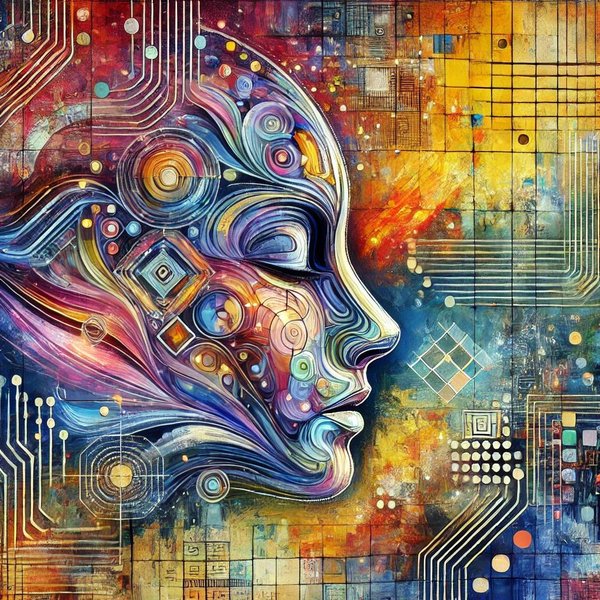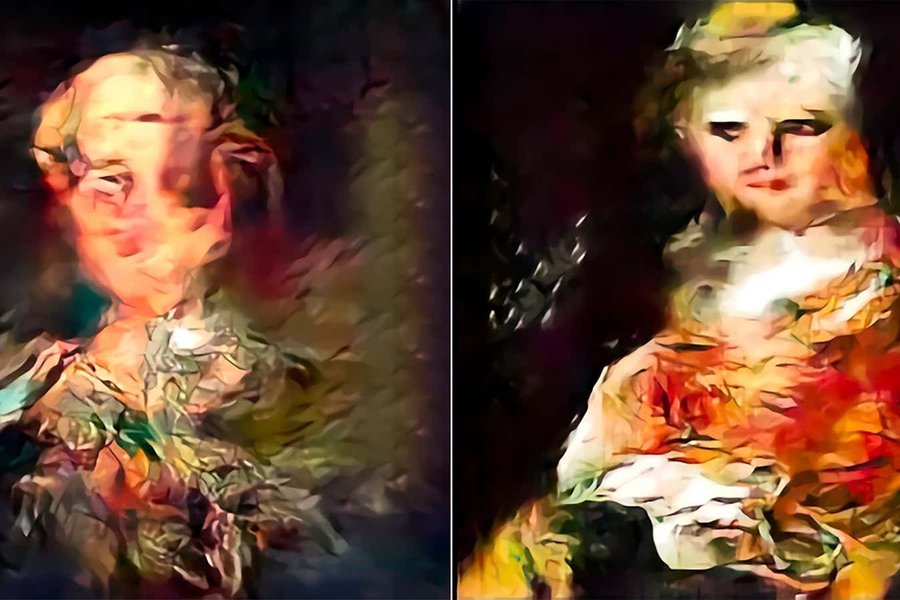
Unlock Your Creative Vision: Can AI Bring Your Imagined Images to Life?
Discover how AI is revolutionizing image creation and the top tools you can use today to generate stunning visuals from text.
Yes, it's absolutely possible to generate images using Artificial Intelligence! While I, Ithy, as an AI assistant, don't directly create images within this chat, I can guide you through the fascinating world of AI image generation. As of May 2025, numerous powerful AI tools are available that can transform your textual descriptions into unique and compelling visuals, ranging from photorealistic scenes to abstract art.
Key Highlights: AI Image Generation in 2025
- Diverse Toolset: A wide array of AI image generators, from free and user-friendly options to professional-grade platforms, are readily accessible.
- Advanced Capabilities: Current AI models can understand complex prompts, generate images in various artistic styles, and offer significant customization.
- Broad Applications: AI-generated images are being used across many fields, including marketing, design, content creation, art, and entertainment.
The Magic Behind the Pixels: How AI Image Generators Work
AI image generators are sophisticated tools that employ advanced machine learning algorithms, primarily relying on models like Generative Adversarial Networks (GANs) and, more recently, diffusion models. These models are trained on massive datasets containing billions of image-text pairs. Here's a simplified breakdown:
- Training Data: The AI learns patterns, styles, objects, and relationships by analyzing vast quantities of existing images and their associated textual descriptions.
- Text Prompts: When you provide a text prompt (e.g., "a futuristic cityscape at sunset with flying cars"), the AI interprets your words to understand the desired scene, objects, atmosphere, and artistic style.
- Image Synthesis:
- Diffusion Models: These models start with random noise and gradually refine it step-by-step, removing the noise in a way that steers the image towards matching the input prompt. This process is like a sculptor starting with a block of marble and chipping away until the desired form emerges.
- GANs: These consist of two neural networks: a Generator and a Discriminator. The Generator creates images, and the Discriminator tries to distinguish them from real images. They "compete," with the Generator getting better at creating realistic images and the Discriminator getting better at spotting fakes, leading to high-quality outputs.
- Iteration and Refinement: Many tools allow you to generate multiple variations, refine the image with further prompts, or use features like inpainting (filling in parts of an image) or outpainting (extending an image).
The result is a completely new image, synthesized by the AI, that aligns with your textual input. The sophistication of these models in 2025 allows for remarkable detail, coherence, and artistic expression.

An example of intricate art generated by an AI, showcasing its creative potential.
Exploring Top AI Image Generators of 2025
The landscape of AI image generation is vibrant and diverse, with several key players offering unique strengths. Here are some of the most prominent tools available in 2025:
Leading Platforms and Their Features
DALL·E 3 (by OpenAI)
DALL·E 3 is renowned for its strong understanding of complex and nuanced text prompts. It's integrated into platforms like ChatGPT (often requiring a Plus subscription, around $20/month) and Bing Image Creator. It excels at generating creative and coherent images, though, like many AIs, it can sometimes struggle with very fine details like human fingers or rendering accurate text within images.
Google's Gemini / Imagen 3
Google has integrated its powerful Imagen 3 model into its Gemini AI assistant and tools like ImageFX. Gemini is noted for producing photorealistic and stylistically rich images. It aims to provide contextually verified outputs by checking against Google Search. Many of its features are accessible for free, making it a strong contender for users within the Google ecosystem.
Midjourney
Midjourney is highly favored by artists and designers for its ability to produce exceptionally artistic, stylized, and often photorealistic images. Initially accessed primarily via Discord, it now also offers a web-based interface. While it requires a subscription (starting around $10/month), its output quality, particularly for imaginative and detailed visuals, is often considered top-tier.

An artistic creation by DALL-E 2, illustrating the imaginative capabilities of AI image generators.
Stable Diffusion
As an open-source model, Stable Diffusion offers unparalleled customization and flexibility. Users can run it locally (if they have the technical know-how) or access it through various platforms and tools like Stable Assistant or DreamStudio by Stability.ai. It's powerful for generating detailed and unique images and supports features like image-to-image generation, inpainting, and outpainting. While incredibly versatile, it can have a steeper learning curve for advanced features.
Adobe Firefly
Adobe Firefly is integrated into Adobe's Creative Cloud suite, including Photoshop and Adobe Express. It's designed with professional workflows in mind, emphasizing the creation of commercially safe images (trained on Adobe Stock and public domain content). Firefly offers features like text-to-image generation, generative fill, and text effects. A free tier is available with limited credits, with more features unlocked through subscriptions.
Canva's AI Image Generators (Magic Media™)
Canva has seamlessly integrated AI image generation into its popular design platform. Tools like Magic Media allow users to generate images from text prompts directly within their design projects. It offers various style options (e.g., watercolor, neon, filmic) and is very user-friendly, making it ideal for social media content, presentations, and marketing materials. Canva's free plan includes limited AI credits, with more available on Pro plans.
Other Notable Mentions
- Microsoft Designer: Allows users to describe ideas and transform them into images, integrated within the Microsoft ecosystem.
- Meta AI: Offers real-time AI image generation, accessible across Meta's social media apps and websites, currently available for free.
- Pixlr AI Image Generator: Provides a free tier for text-to-image generation and integrates with Pixlr's photo editing tools for further manipulation.
- Ideogram: Noted for its improved ability to generate images with accurate text.
Comparative Overview of Popular AI Image Generators
Choosing the right AI image generator depends on your specific needs, budget, and desired output style. The table below provides a quick comparison of some leading tools in 2025:
| Tool | Primary Strength | Ease of Use | Typical Access | Pricing Model | Noted For |
|---|---|---|---|---|---|
| DALL·E 3 (OpenAI) | Prompt understanding, creative outputs | Moderate (via ChatGPT/Bing) | ChatGPT, Bing Image Creator | Free (limited), Paid (ChatGPT Plus) | Integration with ChatGPT, good for varied styles. |
| Gemini / Imagen 3 (Google) | Photorealism, integration with Google ecosystem | Easy | Gemini web/app, ImageFX | Mostly Free | High-quality images, contextual checking. |
| Midjourney | Artistic quality, stylized images | Moderate (Discord/Web) | Discord server, Web interface | Subscription-based | Exceptional artistic flair, photorealistic results. |
| Stable Diffusion | Customization, open-source flexibility | Can be technical (local), easier via platforms | Various platforms, local install | Free (core model), Paid (some platforms) | High control, community support, diverse applications. |
| Adobe Firefly | Commercial safety, Adobe integration | Easy | Adobe Creative Cloud apps, Web | Free (limited credits), Paid (Adobe subscriptions) | Ethically sourced training data, professional tools. |
| Canva (Magic Media™) | Ease of use, design integration | Very Easy | Canva platform | Free (limited credits), Paid (Canva Pro) | Quick asset creation, various preset styles. |
| Meta AI | Real-time generation, social media integration | Easy | Meta apps (Facebook, Instagram, WhatsApp) | Free | Fast generation within social platforms. |
This table provides a general overview. Features and pricing are subject to change, so it's always best to check the latest information from the providers.
Feature Comparison: AI Image Generators
To help visualize how different AI image generators stack up against each other based on common criteria, the radar chart below offers an opinionated analysis. This chart considers factors such as image quality (realism/artistic), ease of use, customization options, generation speed, and the availability/generosity of a free tier. Scores are relative and based on general user experiences and reviews in 2025.
This chart illustrates that tools like Midjourney and Stable Diffusion might offer higher image quality and customization but can be less user-friendly for beginners. Conversely, Canva's Magic Media scores high on ease of use and free tier value, making it accessible for quick design tasks. Google's Gemini/Imagen 3 and DALL·E 3 offer a good balance across several aspects.
The AI Image Generation Ecosystem
The field of AI image generation is multifaceted. The mindmap below provides a visual overview of its key components, including core technologies, types of tools, common features, and diverse applications. This helps to understand how different elements connect within this rapidly evolving domain.
Networks (GANs)"] id1c["Transformers"] id2["Tool Categories"] id2a["Text-to-Image"] id2b["Image-to-Image"] id2c["Integrated Design Platforms"] id2d["Open Source Models"] id2e["Web-based Services"] id3["Popular Tools"] id3a["DALL·E 3"] id3b["Midjourney"] id3c["Stable Diffusion"] id3d["Google Gemini/Imagen 3"] id3e["Adobe Firefly"] id3f["Canva Magic Media"] id4["Key Features"] id4a["Prompt Interpretation"] id4b["Style Transfer"] id4c["Image Editing
(Inpainting/Outpainting)"] id4d["Resolution Control"] id4e["Aspect Ratio Options"] id5["Common Applications"] id5a["Art & Creativity"] id5b["Marketing & Advertising"] id5c["Content Creation
(Social Media, Blogs)"] id5d["Prototyping & Design"] id5e["Entertainment & Gaming"] id6["User Considerations"] id6a["Prompt Engineering"] id6b["Ethical Use & Copyright"] id6c["Output Quality & Consistency"] id6d["Cost & Accessibility"]
This mindmap highlights the interconnected nature of AI image generation, from the foundational technologies to the diverse ways these tools are being applied and the factors users should consider.

AI-generated artwork showcasing abstract and vibrant digital creation.
Visualizing the Possibilities: AI Image Generators in Action
To see how various free AI image generators perform and compare their outputs, the following video offers a practical demonstration and review. It tests several tools, providing insights into their strengths and weaknesses, which can be helpful in deciding which one might be best for your needs.
A review and comparison of top free AI image generators in 2025.
This video, "Top 7 Free AI Image Generators in 2025," delves into both paid and free options, showcasing how they handle different prompts and what kind of results you can expect. It's a useful resource for anyone looking to start experimenting with AI image creation without an initial financial commitment.
Crafting the Perfect Prompt: Tips for Better AI Images
The quality of AI-generated images heavily depends on the clarity and detail of your text prompts. Here are some tips to help you write effective prompts:
- Be Specific: Instead of "a cat," try "a fluffy ginger tabby cat sleeping on a sunlit windowsill, photorealistic style."
- Include Artistic Styles: Specify styles like "oil painting," "watercolor," "pixel art," "Art Deco," "cyberpunk," or "in the style of Van Gogh."
- Describe the Composition: Use terms like "close-up," "wide shot," "portrait," "from above," "symmetrical."
- Mention Lighting and Atmosphere: Words like "dramatic lighting," "soft morning light," "eerie," "misty," "vibrant," "monochromatic" can significantly influence the mood.
- Use Adjectives: Descriptive words add depth (e.g., "ancient, mystical forest," "sleek, futuristic city").
- Iterate and Experiment: Don't expect the perfect image on the first try. Generate multiple variations and refine your prompts based on the results. Many tools allow you to use negative prompts to specify what you don't want to see.
- Consider "Magic Words": Some communities have identified terms that tend to produce high-quality results with certain models, like "hyperrealistic," "trending on ArtStation," "Unreal Engine," "8K."
Practical Considerations and Limitations
While AI image generators are incredibly powerful, there are some practical aspects and limitations to keep in mind:
- Anatomical Inaccuracies: AI can still struggle with complex details, especially human anatomy like hands and fingers, or the correct number of limbs on animals.
- Text Rendering: Generating legible and contextually correct text within images is a common challenge for many AI models, though some, like Ideogram, are making progress.
- Copyright and Commercial Use: Policies vary significantly between platforms. Some, like Adobe Firefly and Canva, design their tools with commercial use in mind and use ethically sourced training data. Always check the terms of service for the specific tool you are using, especially if you plan to use the images commercially.
- Ethical Concerns: The potential for misuse (e.g., creating deepfakes or biased representations) is an ongoing concern. Responsible use and awareness of ethical implications are crucial.
- Subscription Costs: While many tools offer free tiers or credits, extensive use or access to premium features often requires a paid subscription.
- Consistency: Achieving consistent characters or elements across multiple images can be challenging, although some newer features aim to address this.

Example of glitches that can occur in AI-generated images, particularly when AIs are trained on other AI-generated content.
Frequently Asked Questions (FAQ)
Recommended Further Exploration
If you're interested in diving deeper into the world of AI image generation, here are some related queries you might find useful:
- How can I write effective prompts for AI image generators to achieve specific artistic styles?
- What are the ethical considerations and copyright implications associated with using AI-generated images?
- Can you compare the advanced features in AI image generators, such as inpainting, outpainting, and style transfer, across different platforms?
- How can businesses effectively leverage AI image generation tools for their marketing and branding efforts?
References
Last updated May 12, 2025